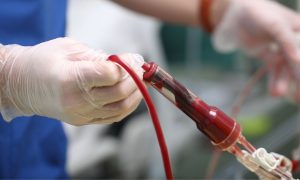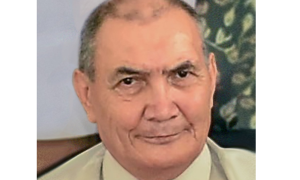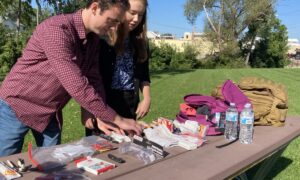Jehovah’s Witnesses base their refusal of blood transfusions on verses in several books of the Bible. Because North Sider Charles Taze Russell’s teachings were the basis for those beliefs, it seems appropriate that Allegheny General Hospital’s Center for Bloodless Medicine and Surgery continues to realize the benefits of bloodless surgery — for everyone.
“I would say that every week we are doing two or three Jehovah’s Witness surgeries of some kind or another,” said Jan C. Seski, the center’s medical director and director of the hospital’s division of gynecological oncology.
A recent study suggests the Witnesses are on to something. In a study published last month in the Archives of Internal Medicine, doctors from the Cleveland Clinic reported that Witnesses who underwent bloodless cardiac surgery fared better than non-Witnesses in terms of infection and complication rates, length of hospital stays, and short- and long-term survival.
Although the study, which compared 322 patients of each group, focused only on cardiac surgery, many doctors report similar trends in orthopedic, gynecological and neurosurgery.
In 1962, Dr. Denton Cooley pioneered bloodless open-heart surgery on Jehovah’s Witness patients in Texas. Since then, the practice has evolved to the point that many surgeons, regardless of a patient’s religious beliefs, try to minimize the loss of blood each and every time they stand over the operating table.
“We’ve taken what we have learned in the management of the Jehovah’s Witnesses and are applying it to the general medical population as a whole,” said Dr. Seski. “Blood in and of itself may be lifesaving. If you have a trauma patient that comes in after a motorcycle accident and they are bleeding to death, you need to use transfusions. But if you can avoid it, in some situations you will get a better outcome.”
Dr. Seski is credited as being the first to bring the techniques to Pittsburgh in 1981 after completing his fellowship at M.D. Anderson Cancer Center in Houston, Texas.
In addition to their religious convictions, many Witnesses fear the possibility of contracting blood-borne illnesses such as hepatitis or HIV/AIDS through transfusions.
“[Donated] blood is dirty — that is the best kept secret in the world. … It can give you all of these different infections,” said William McGill, 62, of Erie, who had successful bloodless large aortic aneurysm surgery at AGH. “Offending my God was first, but when I found out how dirty [donated] blood was, whether I was a Witness or not, I would not have accepted transfusions.”
As tumors are removed in surgery, cancerous cells are released into the bloodstream, Dr. Seski said. Cancer patients’ weakened immune systems can have trouble handling these cells along with “foreign” antibodies and other substances from a transfusion. Immunosuppressant qualities associated with donated blood are a big reason for the increased complications and infections experienced by patients who receive transfusions, according to Dr. Seski. Such complications can lead to longer hospitalizations as well.
There is not one specific methodology used when performing bloodless surgery. Hospitals take a “whole programmatic approach,” said Dr. Seski, and they must adapt to the needs of the patient. Nonetheless, certain procedures are used to increase blood counts and to prevent blood loss before, during and after surgery.
Before surgery, doctors attempt to normalize the patient’s blood count, as many are anemic. Patients who are anemic do not have enough healthy red blood cells, which are responsible for providing oxygen to body tissues.
Blood counts can be raised 1 gram per week by providing the patient with iron and synthetic growth hormones such as erythropoietin, which stimulate the bone marrow to produce red blood cells. The increased speed with which doctors can now boost blood counts to a safe level for surgery is especially significant, as patients with a malignancy are far better off when operated on sooner rather than later.
A hemodilution technique pioneered by Dr. Seski and others in 1977 at M.D. Anderson is one of a number of strategies used to save blood during surgery. Preferred by Jehovah’s Witnesses, it is a closed loop system that separates a patient’s blood into red blood cells and clear plasma. The machine returns the plasma and a saline solution to the patient’s body during surgery in order to equalize blood volume. The red blood cells are kept in the machine, however, and returned to the body at the end of surgery.
Although Jehovah’s Witnesses do not allow their blood to be removed and stored prior to a surgery, they allow this technique because their blood is never technically separated from the body.
The postoperative care of a patient is also very important, as blood can continue to be lost after a surgery is complete. Blood samples, for instance, can remove up to 1 pint per week. To minimize the loss, doctors now use pediatric tubes, drawing smaller amounts of blood while still gaining the necessary data from testing.
Smaller incisions have also reduced the amount of blood lost during surgery.
“We use a laparoscopic approach, and that allows us to really get folks up sooner out of bed because they are not having pain from a big incision,” said Dr. James T. McCormick, who specializes in colorectal surgery at AGH. “If you keep the wound size small, then obviously there is less opportunity for there to be an infection.”
In April, Dr. McCormick performed bloodless colorectal surgery on John Tomolonis, 74, of Ohio. With no complications or infections arising after the operation, he recovered and left the hospital after only four days.
“I was sent to AGH from my local hospital because … they didn’t feel that they had the right equipment to do that,” said Mr. Tomolonis. “I have been feeling great since my surgery,”
Shortened stays such as these and a reduction in the number of transfusions make bloodless surgery an economically wise choice, too.
“If you reduce the transfusion rate by 5 or 10 percent, you could save a hospital like [AGH] $1 million to $2 million a year,” said Dr. Seski.
His techniques are part of an ongoing educational process at AGH. “We have new physicians and personnel coming into the system and are working to properly educate them in the field of bloodless medicine and surgery,” he said.
http://www.post-gazette.com





